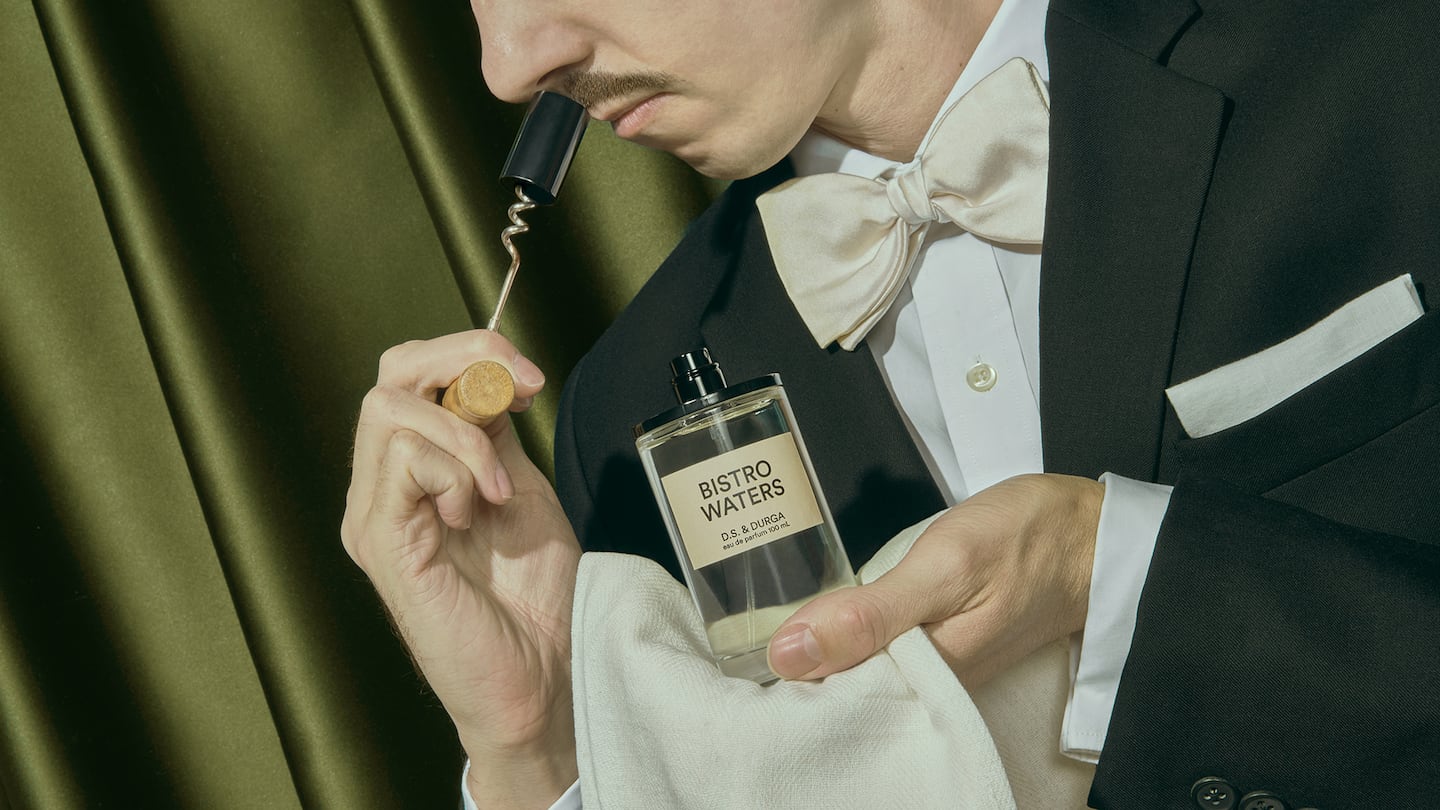
The Business of Fashion
Agenda-setting intelligence, analysis and advice for the global fashion community.

Agenda-setting intelligence, analysis and advice for the global fashion community.

David Moltz, co-founder and perfumer of D.S. & Durga, described the fragrance brand’s late 2019 debut in Russia as the “best launch party.”
Rive Gauche, a high-end beauty retailer in Moscow, created small, immersive rooms for each of the line’s scents, including Burning Barbershop and Cowboy Grass. The store fashioned its own bespoke salon with burnt scissors and wood. There, shoppers could settle into a modern barber chair to experience the fragrance, which smells like the charred shaving tonics found after a fire.
D.S. & Durga’s presence in the market was short-lived. Following Russian President Vladimir Putin’s invasion of Ukraine in February 2022, the brand ceased operations in the country, one of its largest markets outside of the US. In addition to existing supply chain disruptions in both Asia and Europe, the line had to figure out how to quickly recoup lost revenue.
The brand met its revenue projections in 2022. D.S. & Durga made the choice to launch only four permanent collection fragrances and three candles in its line last year, and introduced 11 limited edition products for newness; it made packaging and art decisions that were slightly inconsistent in order to keep products in stock, and it launched a new e-commerce site.
ADVERTISEMENT
“You have to make smart decisions. People don’t always understand why you don’t make this candle and that fragrance, and you’re like, ‘Well, because I would have to invest $100,000 or more to make the inventory, try to sell it, and make sure that it has a place in our line,’” said Moltz.
D.S. & Durga, much like the rest of the beauty industry, is bracing for more turbulence in 2023. Russia’s ongoing war in Ukraine; China’s surging Covid cases; supply chain disruptions; rising inflation and interest rates; and the lingering challenges of enticing workers back to the office make for a swarm of obstacles.
“You could not place more [challenges] on a whiteboard …that leadership has ever had to face,” said Mary van Praag, chief executive officer of Milani Cosmetics.
And yet, many beauty brands remain optimistic. Below, four beauty brands share the strategies they are fine-tuning in 2023.
Milani, which sources its raw ingredients and packaging components in Italy, France, Korea and China, has built out “a joint business plan” with contract manufacturers to avoid delays in 2023, according to van Praag. Last year, the label saw lags in packaging components due to Shanghai closures and had to ship products by air, which is faster but far more expensive than ocean freight, to meet demand. During various times of the year, the brand was sold out of products for six to eight weeks at a time.
van Praag has supplied contract manufacturers with a full-year forecast for 2023, including a new inventory classification system “on how much supply we could carry and how much lead time each [product] takes,” she said. (Previously, Milani was operating on a nine-month supply chain schedule.) To safeguard against future Covid disruptions in China, Milani is planning to source componentry in other countries.
This year, van Praag also focused on making hero product collections bigger. The company upped orders into core lines like its Conceal + Perfect complexion and its Keep It Full Lip Plumper products.
“Our top 50 items do 50 percent of our business,” said van Praag. According to Nielsen data ending November 5, 2022, Milani saw over $130 million in retail sales in the prior 52 week period, a 24 percent increase, year on year.
ADVERTISEMENT
Charlotte Palermino, CEO and co-founder of Dieux Skin, a digital-only brand, is placing orders a full year out, using prior demand to determine its purchases.

“Some people are reducing their overhead [to offset costs] … but the missed opportunity of somebody coming to our site and being disappointed because we aren’t in stock is never going to outweigh having that inventory,” said Palermino
Dieux promotes waitlists to retain customers during sold out periods, offering a discount code to shoppers once products are back in stock. The line is introducing refills this month, another safeguard from packaging delays that can also reduce Dieux’s carbon footprint.
In 2022, a number of direct-to-consumer holdouts abandoned their pure-play digital models and moved into retail. New-to-market beauty brands typically either launched with a retailer or secured a partner in the first few months.
D.S & Durga, which sells at Bergdorf Goodman, Neiman Marcus and Harrod’s, will open its first store in Los Angeles in March, with a second LA store planned for later this year. It operates two owned stores in New York. In 2018, D.S & Durga took outside capital from Monogram Capital Partners in the “low single digit millions,” and plans to raise additional funds to support the new stores, including hiring more staff and building inventory, according to CEO and co-founder Kavi Ahuja Moltz.
Palermino said Dieux will also use new investment to support its launch with a retail partner in late 2023. The brand will also round its assortment that includes a reusable eye mask, eye gel, and serum; a cleanser will debut by the end of year.
At Milani, the focus is on getting its existing retail partners – Ulta Beauty, Target and Walmart, among others – to carry more of its products. van Praag is stressing to retailers that Milani increases shoppers’ basket size and brings a higher-end consumer to their stores – the brand is known as a Charlotte Tilbury and Dior Beauty dupe on TikTok.
“Sometimes the consumer gets let down because they don’t offer the full shade assortment that we have,” van Praag said.
ADVERTISEMENT
Inflation concerns eased toward the end of last year, but Milani is committed to offering more value to customers with jumbo size items and selling an assortment of products as bundles at a discounted price, according to Jeremy Lowenstein, chief marketing officer at Milani.
“[DTC] bundles have minimal complexity internally, but still offer that value proposition that is hard to resist. It’s something we are going to be doing more of in the recession,” Lowenstein said. Milani’s value kits offer 20-25 percent off typical price points.
Highlighting a beauty product’s value will entice consumers to buy, especially those that are worried about inflation and who are feeling pressure on their finances.
It’s a strategy Milani hopes to enforce further at retail. For holiday 2022, Milani debuted two three-product value sets for $14.97 called The Holiday Heist collection with beauty influencer Rocio Soria; the bundles were Walmart exclusives.
Messaging value is key for K18 too.
Though the two-year-old prestige hair care brand, which closed 2022 with $150 million in retail sales, has not discounted or offered promotional pricing on its products online, at salons or with retailers like Sephora, co-founder and CEO Suveen Sahib said communicating that products “do more and last longer” than competitors will be a focal point in marketing in 2023.
In other words, K-18 is amplifying “cost per use.”
“Our Leave-In Molecular Repair Hair Mask is $75 dollars but it lasts you three months,” Sahib said. “That’s less than a dollar a day.”
 Opens in new window
Opens in new windowEditor’s Note: This article was amended on Jan. 3, 2023, to amend the Milani CEO’s name.
Despite the numerous challenges hurled at the beauty industry the last few years, brands should feel good about the year ahead.
A number of brands targeted at younger consumers — armed with loud, colourful branding and fresh capital — have to think about what comes next.
Despite disappointing Singles Day sales results, harsh Zero Covid restrictions and supply chain woes, international beauty conglomerates continue to see China as a growth engine.

Priya Rao is Executive Editor at The Business of Beauty at BoF. She is based in New York and oversees BoF’s beauty and wellness coverage.
As awareness grows about the perils of sleep deprivation, beauty and wellness brands are flooding the market with an array of products to cash in on the booming opportunity.
Going public is usually a pivotal moment in a company’s history, cementing its heavyweight status and setting it up for expansion. In L’Occitane’s case, delisting might be a bigger conduit for growth.
Brands say they’re barreling ahead with marketing and commerce on the app, even as the clock starts ticking for owner ByteDance to sell it or shut it down.
The Spanish beauty and fashion conglomerate’s smart acquisitions and diverse portfolio could be a big draw for investors. Plus, Adidas is set to confirm its stellar first quarter.